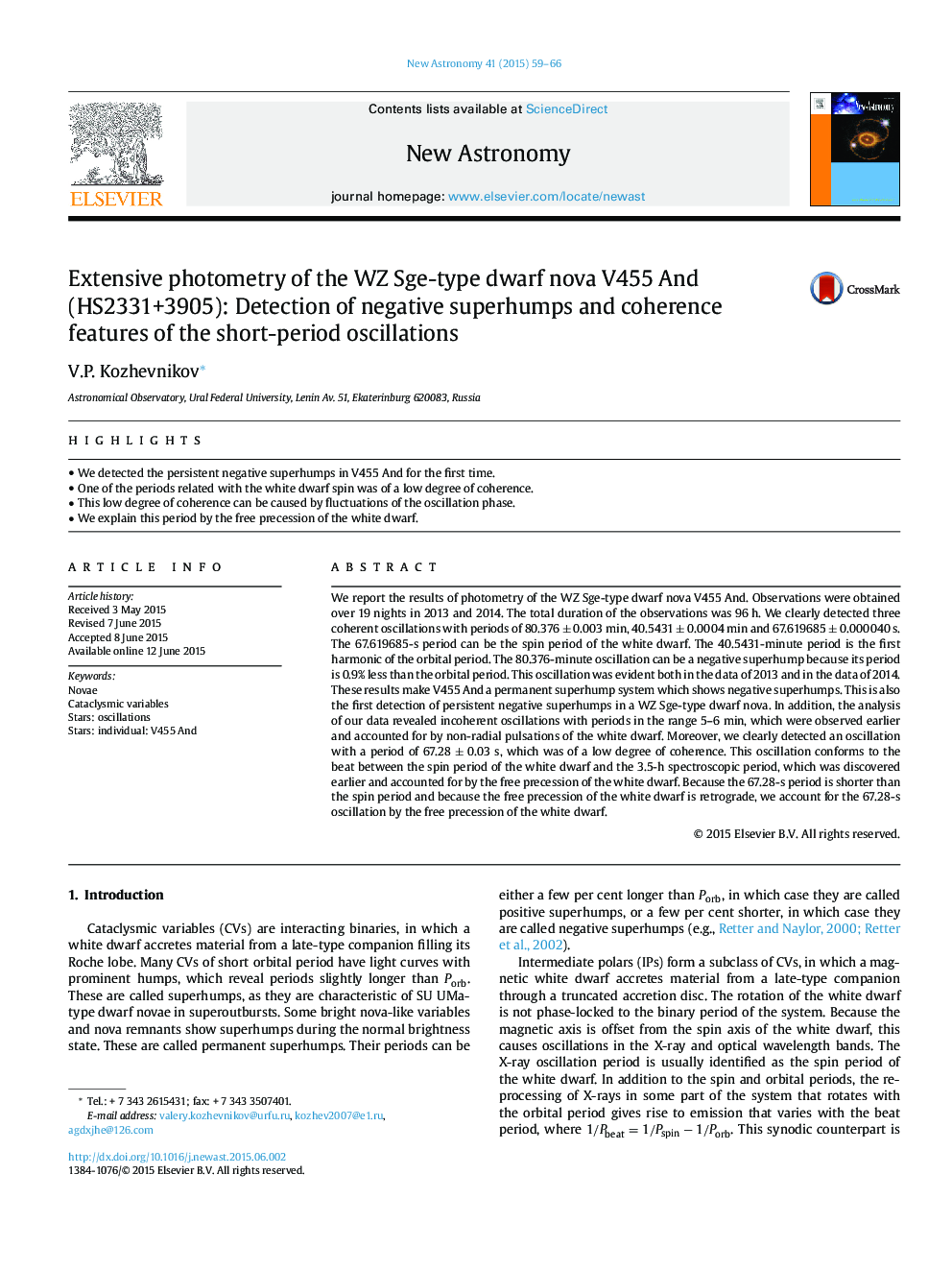| کد مقاله | کد نشریه | سال انتشار | مقاله انگلیسی | نسخه تمام متن |
|---|---|---|---|---|
| 1778755 | 1523737 | 2015 | 8 صفحه PDF | دانلود رایگان |

• We detected the persistent negative superhumps in V455 And for the first time.
• One of the periods related with the white dwarf spin was of a low degree of coherence.
• This low degree of coherence can be caused by fluctuations of the oscillation phase.
• We explain this period by the free precession of the white dwarf.
We report the results of photometry of the WZ Sge-type dwarf nova V455 And. Observations were obtained over 19 nights in 2013 and 2014. The total duration of the observations was 96 h. We clearly detected three coherent oscillations with periods of 80.376 ± 0.003 min, 40.5431 ± 0.0004 min and 67.619685 ± 0.000040 s. The 67.619685-s period can be the spin period of the white dwarf. The 40.5431-minute period is the first harmonic of the orbital period. The 80.376-minute oscillation can be a negative superhump because its period is 0.9% less than the orbital period. This oscillation was evident both in the data of 2013 and in the data of 2014. These results make V455 And a permanent superhump system which shows negative superhumps. This is also the first detection of persistent negative superhumps in a WZ Sge-type dwarf nova. In addition, the analysis of our data revealed incoherent oscillations with periods in the range 5–6 min, which were observed earlier and accounted for by non-radial pulsations of the white dwarf. Moreover, we clearly detected an oscillation with a period of 67.28 ± 0.03 s, which was of a low degree of coherence. This oscillation conforms to the beat between the spin period of the white dwarf and the 3.5-h spectroscopic period, which was discovered earlier and accounted for by the free precession of the white dwarf. Because the 67.28-s period is shorter than the spin period and because the free precession of the white dwarf is retrograde, we account for the 67.28-s oscillation by the free precession of the white dwarf.
Journal: New Astronomy - Volume 41, November 2015, Pages 59–66